23 May, a Monday, class returned with a raging fury (do excuse the hyperbole). I did much better on the quiz, though, which is certainly a spot of good for that morning. I was hoping to perhaps trek on over to Harrods and Knightsbridge again, as Miss Erica has yet to experience all of that. Alas, we had a class trip that afternoon, about which I forgot entirely! Reading the syllabus is always a good plan. Class, having started at 9 am, got out at 10:30. Kristin and I, having not eaten earlier, had breakfast at this little cafe on Gloucester Road called Cafe Forum, I believe. It really has become quite the favourite of ours, as it is very inexpensive, has good food (and excellent cappuccinos), and has a bit of a French vibe to it. Kristin ordered the full English breakfast (only 6 quid for eggs, toast, back bacon, sausage, tomato, mushrooms, and beans!), and I had these very fantastically cooked scrambled eggs on toast (just over 3 quid!). My cappuccino is 2.10 GBP, and they give you free croissants with butter and jam with every coffee order. Seriously, free croissants. And they know how to cook scrambled eggs. I love this place very much. After breakfast, we popped over to Waitrose again to stock up the fridge a wee bit, then zipped through Boots (a pharmacy/makeup store, really) for allergy medicine and a few other things (I cannot tell you how bothersome the pollen is!). Come 1:30 pm, we lazily took the tube from Earl’s Court to Gloucester Station (we could have walked to Gloucester), where we met our entire class for the longer haul over to the British Museum. We finally made it to the museum and met up with Liz, the guide from our London bus tour and Westminster Abbey.
 Exterior shots of the British Museum.
Exterior shots of the British Museum.
The British Museum is really very fantastic, and I honestly would go back, as there were so many more intriguing exhibits to see. When first walking into the center of the museum, you come across this very large, circular room with a glass ceiling, open to the sky. The ceiling was designed for the Millennium, creatively dubbed the Millennium Ceiling… or so we thought. ‘Twas what our tour guide Liz claimed, however further research says this part of the museum is actually called the Great Court. Proper names aside, watching the clouds rotating around the sky through the glass gives this sort of majestic, timeless, spinning globe effect, mirroring the timelessness of the museum in a simplistic, almost gratifying affirmation of what lays inside its walls. In the very center of the court is the famous Round Reading Room, historically used by the likes of Oscar Wilde, Bram Stoker, H. G. Wells, Karl Marx and many more when the museum still housed a vast library collection (this has since moved to the national British Library at St. Pancras).
First, Liz took us into one of the smaller sort of libraries flanking the museum’s center, wherein she showed us a replica of the Rosetta Stone and explained both its history and extreme importance in the way ancient languages could then be deciphered from its writings. The Rosetta Stone can essentially be divided into three parts, each telling the same story, if you will, but three distinct scripts- Egyptian hieroglyphs on top, demotic in the middle section, with Ancient Greek rounding out the bottom third. The Stone itself was, as Liz would say, acquired by the British as the spoils of war upon the British defeat of the French in the Napoleonic Wars. Acquired, because apparently, and I quote, “‘Theft’ is a very dirty word in Europe. We do not thieve. We do not steal. We… acquire.” I suppose you would not want something as dirty as theft to tarnish the Brits’ classy, civilized reputation! As such, you either find a more appealing (read: nice) euphemism for whatever you are describing, insist that your country won or tied a battle, or unapologetically decline to mention any instance of loss or shame. Historical retelling is fantastically entertaining, I must say.
After the brief lesson on the Rosetta Stone, we were whisked past the actual Rosetta Stone (encased in glass, of course!) in order to enter the section for Assyrian and Mesopotamian artifacts dating back to the 11th through 8th-century B.C. The entrance to this first exhibit was guarded by two gargantuan “creatures” of Assyrian origin. These creatures had the heads of man and the bodies of, if I am remembering correctly, lions with wings. Such was meant to symbolize the wisdom and rationality of man, the strength and pride of a lion, and perhaps the wings added a rather fearsome, other-wordly note to the mix. Underneath the belly of each of these creatures is carved Cuneiform script, I believe speaking of the Nimrud royal palace these creatures used to guard (such is now modern-day, northern Iraq). Behind these creatures, one finds a room almost entirely lined with these gorgeous, intricately carved stone panels depicting an Assyrian king’s battle with lions that had been ravaging his city. The purpose of carving this story into the panels was to assert the strength and power of the king, as he did in fact defeat the lions and protect his city from harm. Thou shalt be warned, ye who enter! Liz said this was an early form of propaganda. Undoubtedly it was.
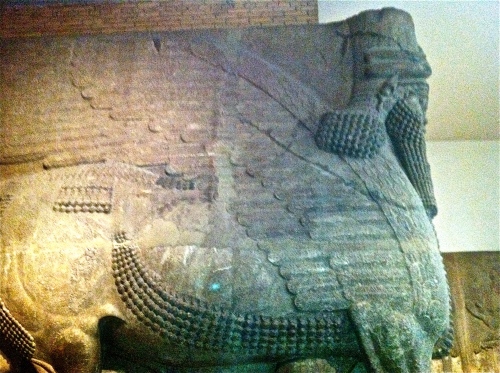 Assyrian statues of winged, human-lion creatures, 883-859 B.C.
Assyrian statues of winged, human-lion creatures, 883-859 B.C.
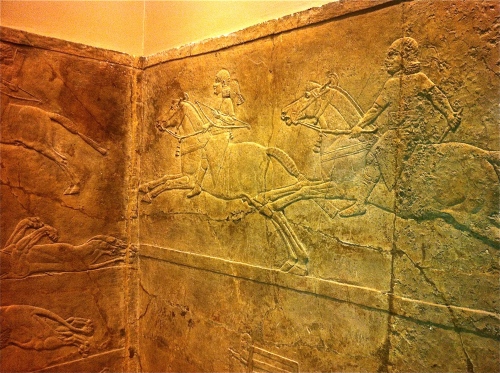 Carved depiction of Assyrian lion-hunts, 645-635 B.C.
Carved depiction of Assyrian lion-hunts, 645-635 B.C.
The next exhibit will most certainly be a favourite of my grandfather’s, and I must say it was completely gratifying to see as it was all about our lovely, Greek ancestors. I give thee… the Parthenon! Well, a small model of it, as we know the Parthenon is still (partially) standing in Athens. The Parthenon was originally built as a temple for the goddess Athena, known not only for her ferocity and strength in war, but also for her unique birth. I am sure not a soul would argue that springing from your father’s head fully grown, clothed, and ready for battle is nothing short of unique, yes? Once Greece adopted Christianity, the temple was converted into a church, and later into a mosque once the Turks gained control of the island nation (and then some). The only reason why the Parthenon appears to be in such disrepair today is due to its lamentable involvement in an unceremonious, Venetian bombing back in the 17th-century. Using an historical monument as an armory is not a good idea, kids. In the early 19th-century, the Earl of Elgin, Thomas Bruce of Great Britain, acquired (bought) the carved, marble panels that lined the interior of the Parthenon. These panels are now known as… the Elgin Marbles (again with that British creativity in naming things!). The Elgin Marbles, and other acquired statues are almost obscenely life-like. For instance, the pantheon that once stood in promenade across the Parthenon’s roofline is entirely three-dimensional, with exact, painstaking detail carried even to the sculpture’s backs! This is despite the fact that not a soul could ever see their backs when placed upon the Parthenon. Liz suggested that the Greeks had wonderful foresight, realizing that these would be displayed in a certain British museum one day, therefore such all-around detail was requisite. I shall apologize for the lack of pantheon pictures, as there were too many gawking tourists in the way to snap a decent photo. It should be noted that the roofline was indeed my favourite part of this exhibit.
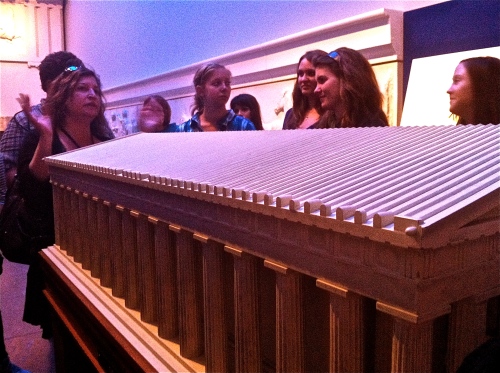 The Parthenon model, a few peers, and tour guide Liz (coincidentally the one with her hand raised).
The Parthenon model, a few peers, and tour guide Liz (coincidentally the one with her hand raised).
 One of the horse heads flanking the Parthenon’s roofline, alongside the pantheon of gods.
One of the horse heads flanking the Parthenon’s roofline, alongside the pantheon of gods.
We walked along around the exhibit, unfortunately (and hastily) passing through the rest of the Greek and Roman exhibit, sans stopping. Liz took us all upstairs to Medieval Britain, where we saw the Lewis Chessmen, astonishingly a set of chess, made in the 12th-century by Scots in the Hebrides. She did not say much about the chessmen, mentioning how they inspired the chessmen design for the Harry Potter films. Moving along ever-swiftly, we came across a lovingly (ahem) preserved, unfortunately murdered man called the ‘Lindow Man,’ who was the victim of a semi-ritualistic Druid sacrifice (Druids, by the way, were the elite priesthood of British Celts dating back to the Iron Age). I say semi-ritualistic, because Druids most always sacrificed animals, leaving human sacrifice for the most dire of situations. Apparently it was considered quite lucky and an honour to be chosen for the sacrifice. To be chosen, one dozen enthusiastic citizens were gathered together, awaiting their twelfth of a kind of hoe cake. The person with the most burned section of hoe cake was the winner… I’m not sure I would classify this as winning, but to each their own, I suppose. Upon examination, Lindow Man was discovered to have ingested this hoe cake, in addition to a bit of holly before his untimely death. The holly effectively numbed him from the pain of having one’s head bashed open, throat slit, and blood drained. Indeed.
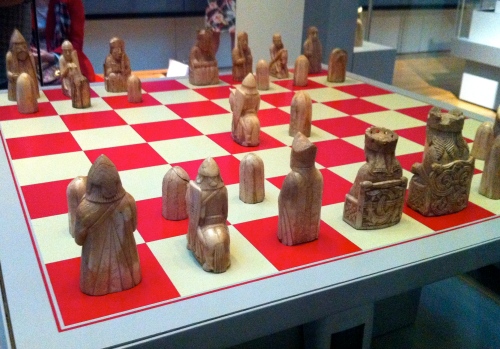 The Lewis Chessmen, 12th-century.
The Lewis Chessmen, 12th-century.
 Lindow Man, roughly 2000 years old.
Lindow Man, roughly 2000 years old.
The final organized exhibit visitation was that of the Mummy Gallery, which indeed sang to my inner child, as Ancient Egypt and mummies, in particular, were quite the obsession of mine back in grade school. Kristin spoke of how creeped out she was by all of he bodies, especially the idea of having one’s brain removed through the nose by a nice little hooked instrument. I expressed my fascination with the subject, to which she said, “That is why you are pre-med, and I’m pre-law.” Clara chimed in, saying, “And I leave all that to Brendan Fraser, which is why I am a film major.” Humour amongst the dead! Who knew? We were shown an example of perfect, natural corporeal preservation, managed by direct contact with dry, desert sand. I give thee Ginger, named thusly because of his wonderful ginger hair, of course! Ginger is the earliest-known Egyptian mummy, dating back to 3300 B.C. He was buried with various accoutrements, including vessels, dishes, and the like to be used in the afterlife. In Ancient Egyptian religion, it was believed that one would a) only make it to the afterlife if they were preserved entirely, and b) essentials in one’s life were needed in burial to be taken over to the next world. It seems that Ginger ticked both boxes, and is having a grand old time in some sort of sultry paradise. After Ginger, we looked upon a poor soul who was not preserved properly, therefore did not make it to Paradiso. A shame. This individual lacked the direct contact with sand to preserve his or her flesh, therefore looks like a bit… bony.
Time dragged on and the Egyptians became a bit more skilled in the art of bodily preservation; burials shifted from the more mundane and simplistic, to elaborate and exacting. Sand preservation was soon ditched (too unreliable) and precise mummification promptly adopted in its place. Such involved the removal of bodily organs, leaving the heart inside. The heart remained because it was said that upon entrance to the afterlife, one’s heart was weighed on a scale determining inherent goodness; if your own heart was not within your body, there was a chance you could have pulled the old switcheroo with some unsuspecting dimwit’s better heart, thus unfairly securing your place in Paradiso. The removed organs were wrapped in natron-soaked bandages and placed within urns, to be buried with the body. The body itself was dried with salts and preserved, like the organs, by being wrapped in the aforementioned soaked bandages. Bodies were still buried with life’s necessities, with the wealthiest of Egypt’s dead being buried either quite literally with servants, or with statues thereof, to come alive when needed. The bodies were placed within sarcophagi, which became more elaborate and beautifully detailed as time wore on. The photographs below show a selection of mummified bodies and their sarcophagi, all Egyptian and dating from various periods.
Following the Mummy Gallery, I broke from the group and ran down the stairs to seek out that original Rosetta Stone, again, wanting to take a picture of the real thing. Presenting… the Rosetta Stone! It was admittedly quite difficult to get a decent picture of the thing, namely because of how much glare bounced off the glass casing. The milling tourists did not help, either.
After the museum jaunt, I declared that I wished to return to the museum another day, however the others were not as keen. Moving along, we gathered Erica to find a place for dinner. After much debate, we found a nice little pub called the Angel & Crown. ‘Twas near Leicester Square, around which we oddly always find ourselves (I think it is the theatre calling us in). I finally had fish and chips, which was very good, indeed. Even the mushy peas, which sounds quite vile, were a nice creamy, springy contrast to the fried goodness. Speaking of which, the British really know how to fry things properly- always crisp, never soggy or oily- and that goes for fish AND chips. It is a wonder how those chips stay so lovely… anyway, Erica tried her first steak and stout pie, while Kristin got the fish and chips as well, and Clara had the potato and leek soup. We polished off dinner with a chocolate sponge pudding I had ordered for myself, but was willing (shocker!) to share. The pudding was, from what I could tell, the traditional steamed sponge (really, cake) served with a fudge-like chocolate sauce, raspberry sauce, and vanilla ice cream (even though I asked for just cream). It was, lacking cream aside, a fantastic way to end the meal, as by that time we were quite tired, a bit chilly, and in want of a comfy bed or something of that sort.
Next up will be the excursion to Stonehenge and Bath, and our long-awaited viewing of Tennant and Tate’s Much Ado About Nothing. Sigh no more.


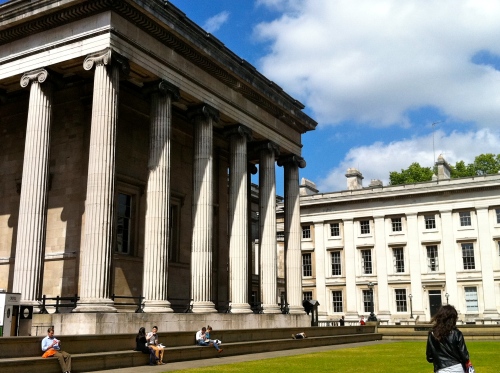

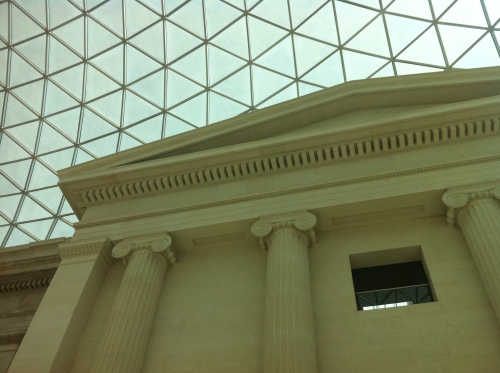
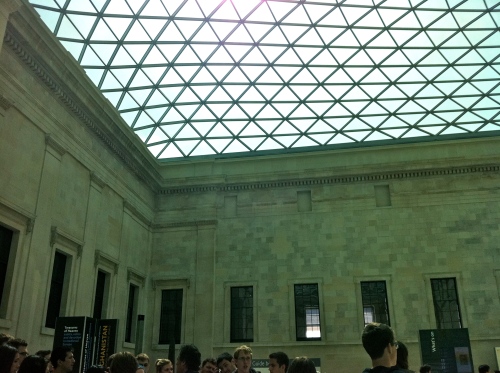
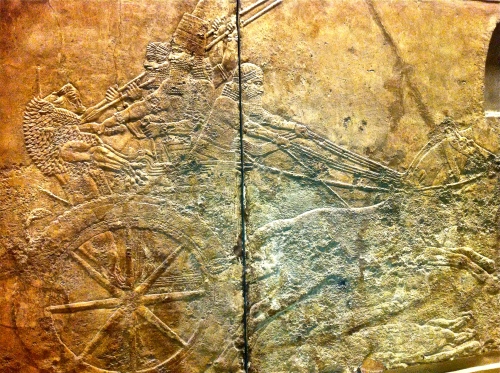
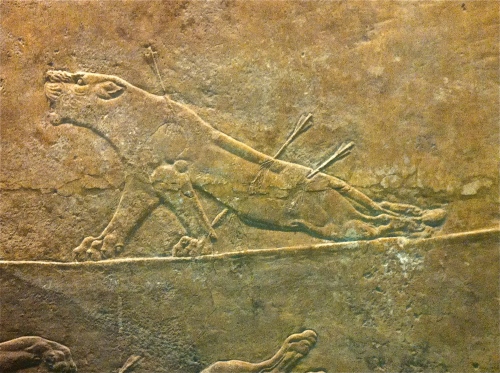
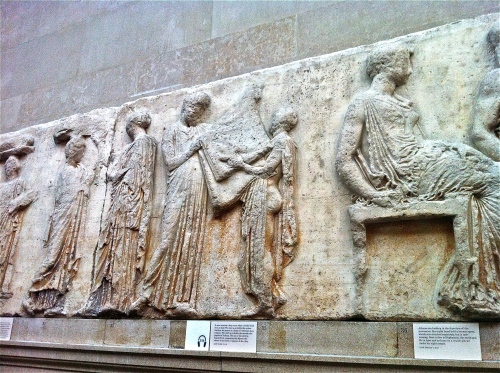
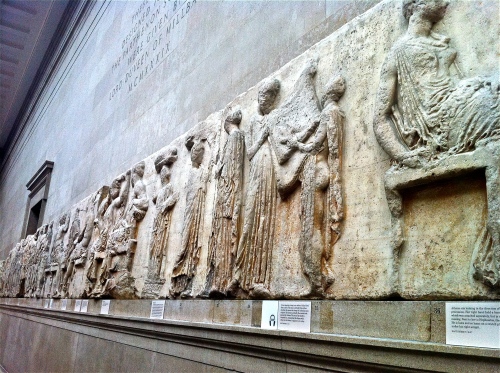
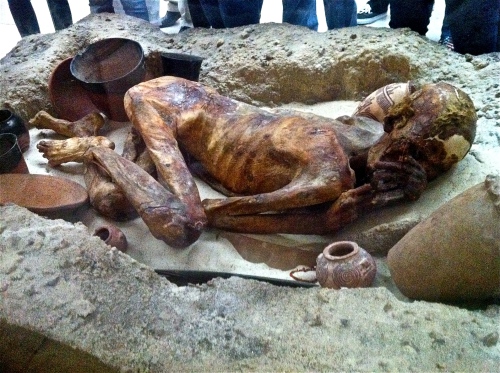


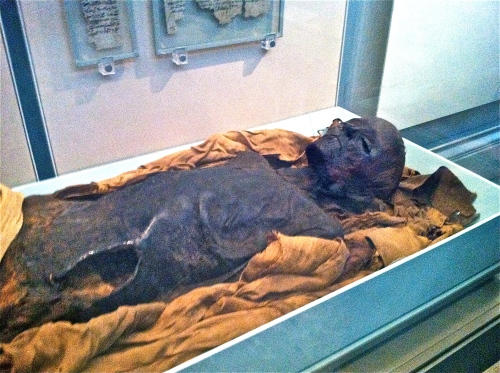
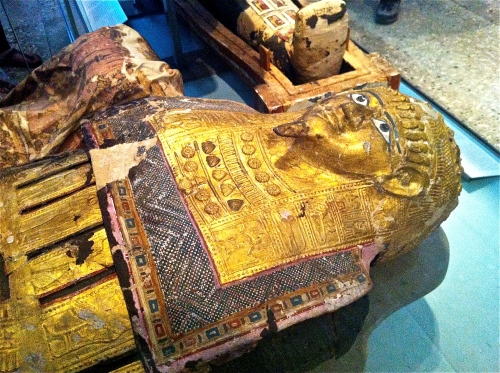
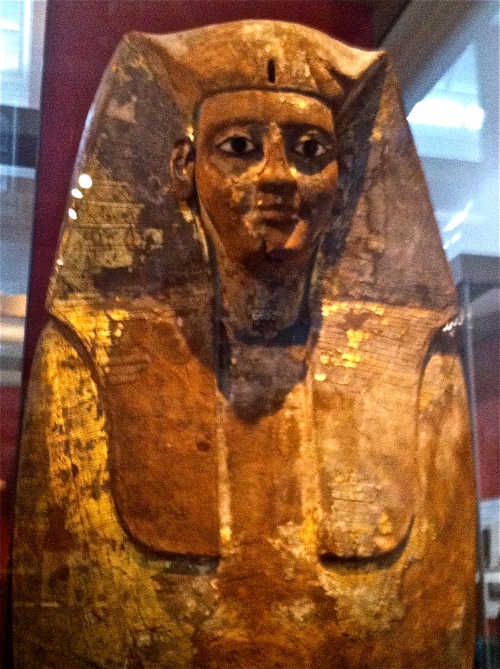
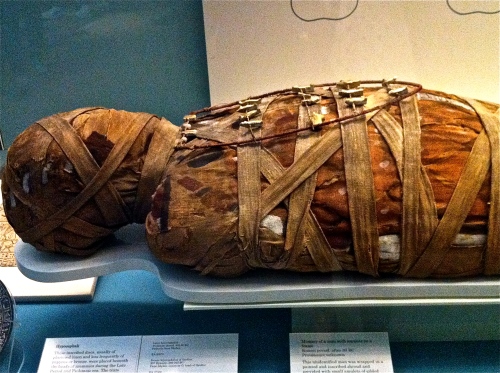
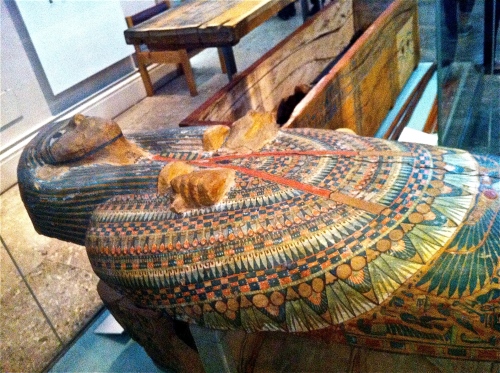
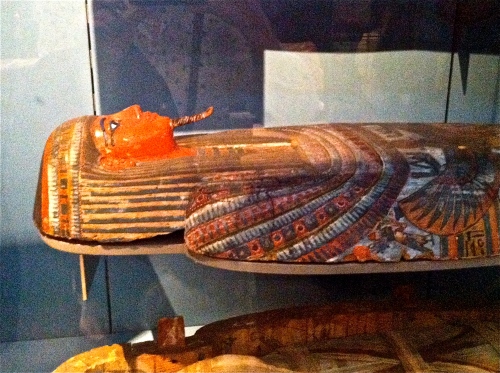
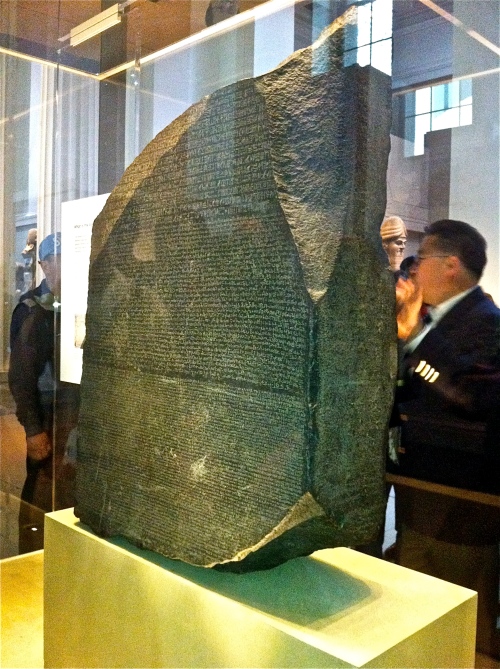
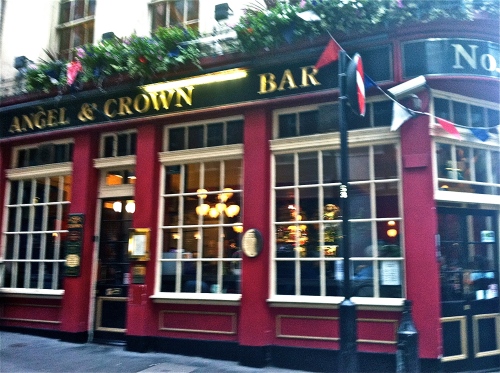
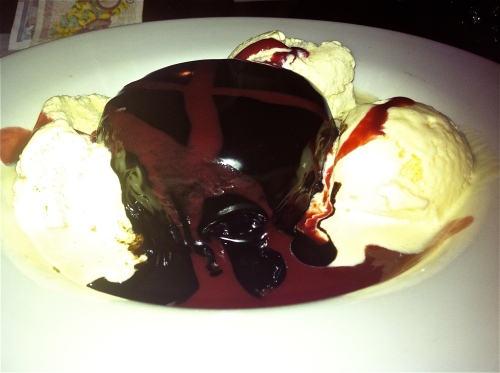
Always look forward to latest post. Hugs